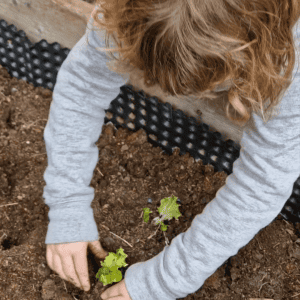Using Gardening for Language Learning
Tis the season to get those green fingers out and also put in a big focus on your outdoor language learning!
Gardening with children and in our case vegetable gardening can open up a whole new world to language learning. The days are getting longer and the temperatures are finally warming up, and this means more time outside but it also means you can start your vegetable garden planting.
Gardening is an absolutely fabulous way to not only get your children outdoors and see the process of how food that they see in the supermarkets etc lands on our tables, but it is also an fantasic opportunity for language learning.
So what do I mean when I talk about language learning opportunities.
The Planning Phase
So what are you going to grow? This is a great way for your child to think about all the fruits and vegetables that they know. Use this to make some drawing or flashcards of their favourites and start planning what you are going to grow and where. At the same time learn the names of the vegetables.
(Tipp: We use The Square Foot Gardening Method, here are some resources for you in english and german for you to take a look at Ultimate Guide to Square Foot Gardening or Square Gardening.)
During this planning phase you can get your children to draw what is going to in each area of the vegetable garden or into which containers etc. You can then ‘test’ your child to see if they remember the names of the various vegetables in both languages.
An additional language learning item is of course the colours involved when planning your garden. Red or purple peppers, Green tomates or yellow ones – the learning in the planning phase is all about containing the vocabiulary of the vegetables.
Planting
So you now know what and where you are going to plant items, now let’s get to the planting. Here youcan learn the vocabulary for the tools thatyou are going to use for example.
Trowel – die Kelle
Spade – der Spaten
Soil – die Erde
Watering can – die Gießkanne
Wheelbarrow – die Scheibtrue
Water – das Wasser
You can then create short sentences related to the tools and plants that you are going to be using.
Plant Care
So all your plants have been planted and now you need to make sure that they are being fed and watered. Here you can ask some questions;
Is the soil dry?
Are there any dead leaves?
Shall we water the garden?
Can you see any vegetables yet?
Start with some easy yes/no questions and then you can expand to asking for more detailed answers. The key here is to make sure that they can understand all the vocabulary in the sentence in order to answer the questions.
Harvesting
This is of course one of the best parts – reaping the rewards of your hard work. At this phase you will also notice an increased understanding and use of the vocabulary that you have used in order to grow your vegetables – great job!
Gardening is a great way to encourage language learning. The next phase could also be to look at recipes in both languages for the vegetables that you have grown and cook them together- lots of valuable skills to be learnt here.
Check out our Instagram reel with Emily planting her first lettuces of the season. Instagram reel
Hope you have lots of fun integrating gardening into your langauge learning journeys.

